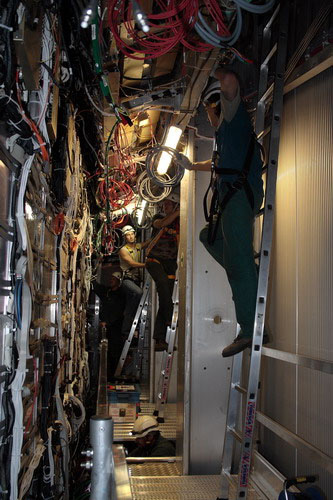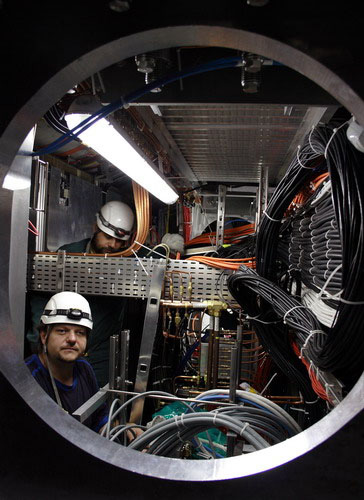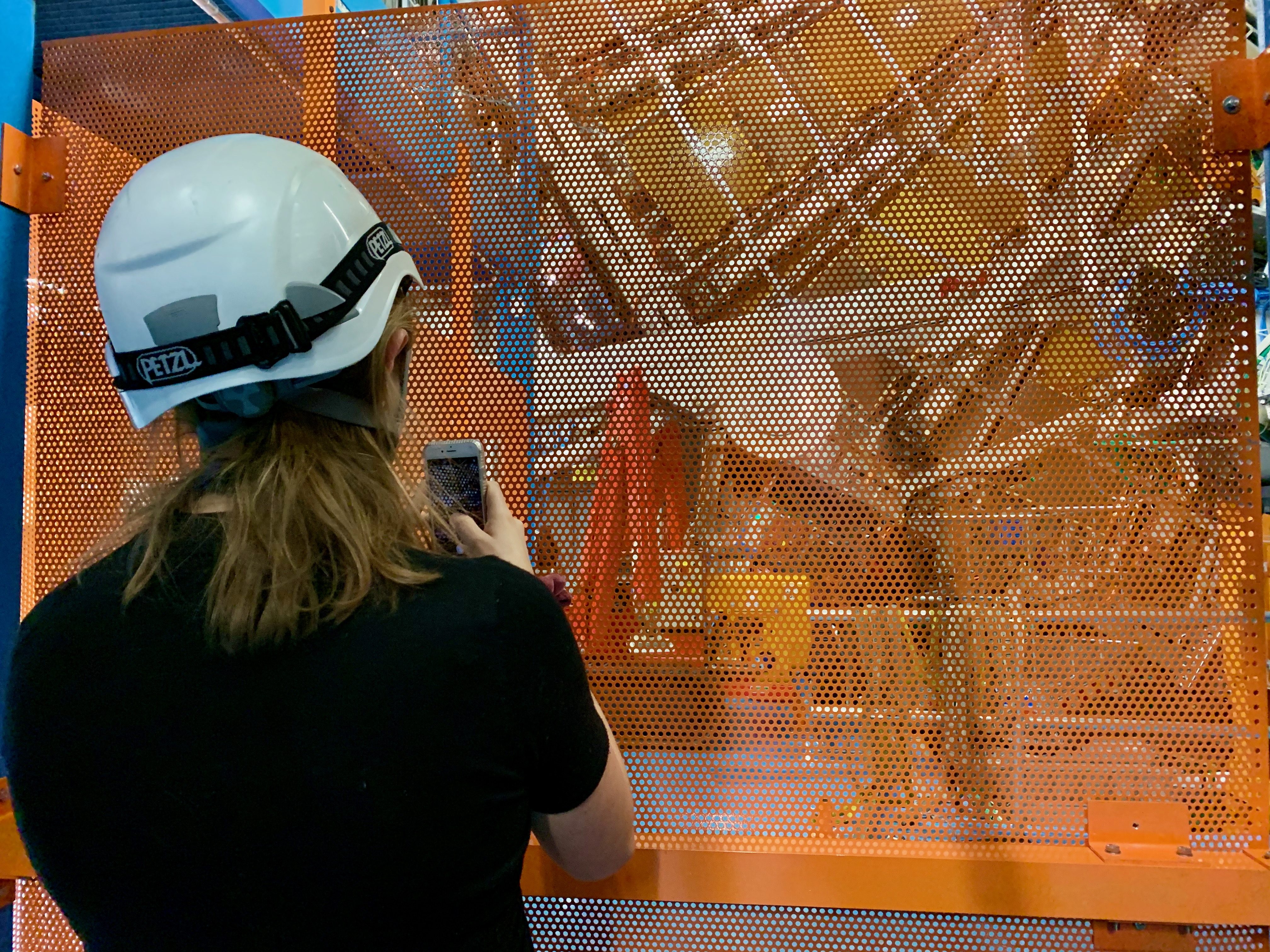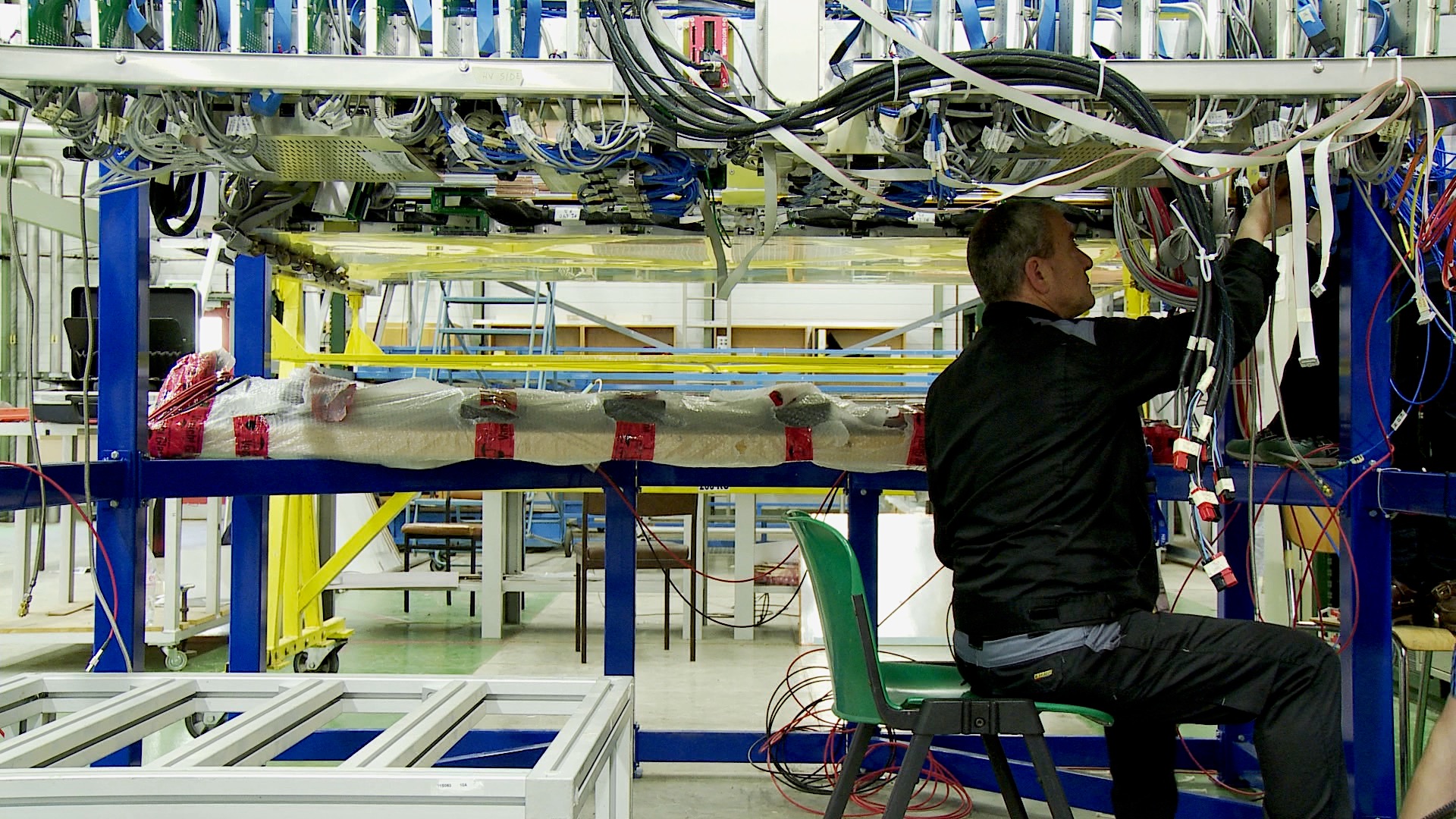Cables: The “blood vessels” of ATLAS
15 January 2008 | By

The cables within the ATLAS detector may be thought of as the blood vessels and nervous system of the experiment; they carry power to the detector, they deliver messages to control its functions and they relay the data taken, ready for analysis. Just as blood vessels and nerves criss–cross and connect the organs and tissues of the human body, cables penetrate the whole of the ATLAS volume, reaching each and every one of its elements.


Even armed with the knowledge that the ATLAS detector at CERN is one of the largest particle physics experiments ever attempted, the sheer scale of the cabling system is difficult to imagine. For example, more than 25,000 optical fibre channels are used just to deliver information and crucial timing signals. Over the last two and a half years, the total number of cables fitted, excluding the local cables preinstalled on the sub–detectors, is almost 50,000. If laid end–to–end, these would stretch from Los Angeles to Boston, having a length approaching 3000km. Completing the job would have taken one person over fifty years to complete; a whole lifetime’s work.
The ubiquity of the cabling system means that ATLAS developers have had to carefully consider the design of the various lines, pipes, and cables since the very outset. It would be foolish to build a city without simultaneously constructing roads for its inhabitants to get from A to B. The same holds true for these essential routes for power and information flow through the ATLAS detector.
As the detector has been built with movable parts — to allow it to be opened up in the future for maintenance and repair work — it was crucial that the cabling system be designed with these potential moves in mind. This way, the detector can be kept under working power and temperature conditions whilst any adjustments take place.
To achieve this aim, the cables have been connected to movable parts of the detector — the calorimeter end-caps, the muon wheels and the magnet end-cap toroids — through sets of flexible chains. These chains also carry other essential services such as gas pipes, water pipes, and cryogenic lines that help maintain the super-cooled state of certain parts of the detector. Altogether there are twenty-six flexible chains and lines, sixteen of which include cables.
Over the last five years, the project has gathered momentum. After passing through initial projection and Computer Aided Design phases, trays to hold and direct the writhing masses of cables were fitted throughout the framework of the detector. The final stage, the cable installation itself, has taken two and a half years and has involved numerous teams of technicians from countries including Russia, the Czech Republic and Poland.
Surprisingly, the smallest of the ATLAS sub-detectors — the inner detector — makes use of a third of all the cables; equal to the amount accounted for by the biggest the muon tracker. In terms of cable concentration, however, they are at opposite ends of the scale; the inner detector cables are concentrated in a very small volume at the centre of the detector, whereas the muon cables are distributed throughout its whole volume. The remaining third of the cables are utilised by the other ATLAS detectors and sub-systems.
An ever–changing cabling team, which shifted and grew according to the specific tasks and required expertise associated with different points in the project, has been working intensively on its development and realisation for over five years. ATLAS cabling is now nearing completion and the team expects the installation to be finished by early 2008.



